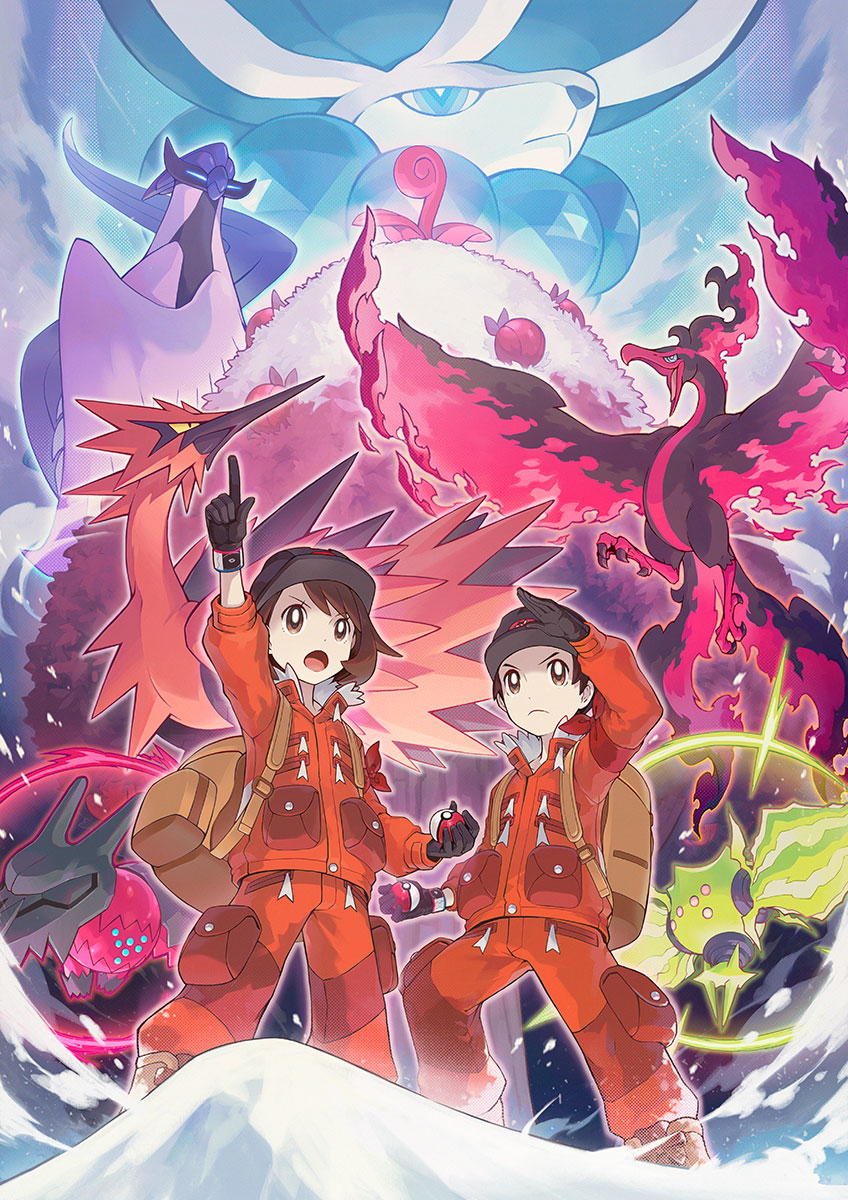In Pokémon Sword and Shield’s upcoming DLC expansion, The Crown Tundra, trainers are pulled into yet another adventure in the Galar region, this time in a frozen expanse where a number of previously unseen, legendary Pokémon are said to live. Like The Isle of Armour before it, The Crown Tundra’s meant to represent a trainer’s path to greatness beyond Sword and Shield’s core story, in which the player ends up saving the whole of Galar by narrowly preventing a Pokémon-related apocalyptic event.
Though players don’t technically have to finish Sword and Shield’s main story before diving into the DLC, the expansions were created with late-stage story players in mind — folks who had already discovered the secrets of this generation’s legendary pair and the cause behind Galar’s frequent troubles involving Pokémon spontaneously Dynamaxing at inappropriate times, causing chaos. Within the game’s story, by the time you beat all of Galar’s gym leaders and its reigning Pokémon champion, you’re a kid who’s also met, caught, and mastered more than a few mythical Pokémon that haven’t been seen in hundreds of years. So the journeys into The Isle of Armour and The Crown Tundra’s far-flung wildernesses are the sorts of things your character’s meant to be more than comfortable with despite their danger.
[referenced id=”1226100″ url=”https://gizmodo.com.au/2020/06/pokmon-sword-and-shields-new-isle-of-armour-expansion-is-a-breath-of-fresh-air/” thumb=”https://gizmodo.com.au/wp-content/uploads/2020/06/26/z1vnxebesqbhvtr5hvcv-300×168.gif” title=”Pokémon Sword and Shield’s New Isle of Armour Expansion Is a Breath of Fresh Air” excerpt=”When Nintendo first announced that game’s publisher would.”]
The Pokémon franchise has never gone to great lengths to tell players exactly how their characters feel in the wake of all the experiences they’ve gone through over the course of the game. Something interesting to consider is the idea that, in Sword and Shield’s post-game, the trainer you play as has been through so many trying experiences that they see Pokémon in a fundamentally different way. “Scary” Pokémon have been a part of the world since Red and Blue first brought players to Lavender Town where they were eventually made to battle the ghostly apparition of a dead Marowak who was murdered by Team Rocket while trying to protect its child.
Since then, Nintendo and the Pokemon Company have only expanded on Pokémon’s mythos of monsters whose origins are rooted in other forms of horror. The Pokédex entries for Ghost-type Pokémon like Frosslass, Honedge, and Drifloon all detail how the different species delight in scaring, and in some cases murdering unsuspecting humans in order to drain them of their life force. Others, like Phantrump and Yamask, are thought to be Pokémon who began their lives as humans before meeting untimely ends that led to their being transformed into magical monsters through unknown means. While the games’ official descriptions of these Pokémon originally felt like kitschy flavored text meant to spook children, it all takes on a different tone in Sword and Shield.

Because so much of the gameplay involves you running through a sprawling, semi-open world in which you frequently encounter Pokémon in the overworld view (who chase you down even if you’re not in tall grass if they catch sight of you), the game has a way of making you understand what it must be like for young trainers who leave their small hometowns in search of glory in far-off cities. When you’re moving through these games’ Wild Areas, you don’t encounter very many other trainers all that often, meaning that it’s just you and whichever partner Pokémon you’ve brought along facing whatever comes you way. In moments, it’s easy to imagine the abject fear the games’ unsettling Pokédex entries might instill in a trainer.
Along with a handful of new legendary Pokémon, The Crown Tundra also introduces a Galarian version of Slowking, one of the evolved forms of the Slowpoke species. As was the case with the rest of the Slowpoke (its evolved form) line, Galarian Slowking exhibits vast psychic powers that become amplified thanks in large part to its symbiotic evolution with Shellder, another species of Pokémon that affixes itself to a Slowpoke’s head, releasing powerful toxins directly into its brain. Whereas the Kantonian Slowking variant’s simply known for becoming powerfully intelligent because of its brain poison, Galarian Slowking’s story ends up being much darker. The “Hexpert Pokémon” is known instead to creep people out by muttering incantations to cast spells against opponents and, presumably, any unlucky trainers who come face to face with one in the wild.
Pokémon exhibiting human-like behaviour is rather common, but the idea of a twisted mage monster wandering through a frozen wasteland while trying to cast hexes on anything it sees is the sort of unnerving thing you’d hear grizzled trainers tell tales of after returning from the Crown Tundra chilled and alarmed. It’s fun to think that in a world of god-like creatures that disrupt people’s everyday lives, there are also Pokémon like Galarian Slowking and other more on-the-ground monsters that still manage to make the world feel like a rather perilous place that it isn’t safe to journey through alone.
For more, make sure you’re following us on our Instagram @io9dotcom.
Editor’s Note: Release dates within this article are based in the U.S., but will be updated with local Australian dates as soon as we know more.
